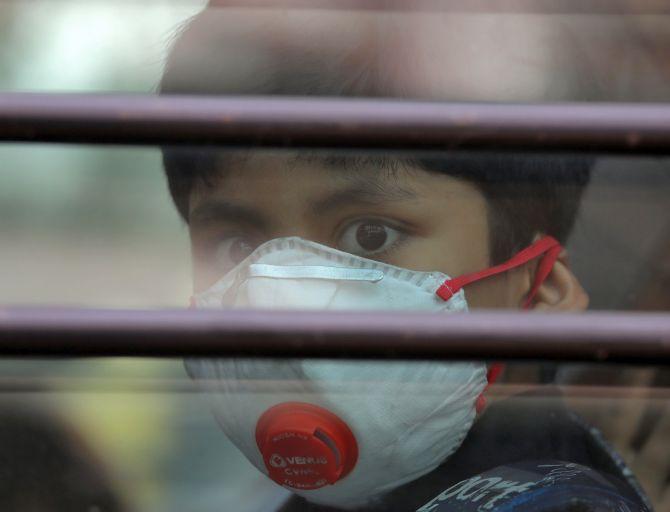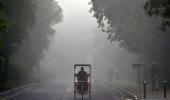'And for the developing lungs of our children, this should not be tolerated. Not at all,' says Sunita Narain.

We can't breathe in Delhi.
It is a public health emergency as pollutants in the air have spiked to extremely toxic levels.
Officially, the air quality is in the severe+ zone, which means that it is bad for even the healthy, forget about what it will do to our children, the aged, and the vulnerable.
But what I want to discuss is why and what can we do -- without the clamour and the politics that in their own way are contaminating the air today.
So, what happened in end October and early November?
Till the afternoon of Diwali (October 27, 2019), the air in Delhi was bad, but still somewhat breathable.
But with the weather turning adverse -- colder nights and less wind, and so no dispersion -- pollution was steadily rising.
Also, stubble burning in neighbouring states of Punjab and Haryana was beginning though its contribution to pollution in Delhi was minuscule.
However, it was clear that things could get worse.
This is why it was important to demand that all the local sources of pollution were checked.
We needed to make sure that crackers were not burnt because there was absolutely no room for toxins in the air.
Enforcement was critical.
But this message was lost.
Instead, what happened was as follows.
On the evening of October 27, 2019, the pollution levels spiked exponentially.
My colleagues have estimated, on the basis of the data from the 50-odd monitoring stations, in the city and around, that there was a 10-fold jump in PM 2.5 concentration between 5 pm and 1 am due to the bursting of crackers.
They say this completely wiped out whatever gains we had made to control pollution.
So, it's clear that this was not a clean Diwali.
This is not all.
The wind direction changed after Diwali and much more smoke -- a result of stubble burning by farmers -- blew into the city and its surrounding areas.
The contribution of stubble burning went up to over 30% of the pollution load.
And as if this was not enough, cyclonic activity in the Arabian Sea and the late retreating monsoon meant that wind speeds died. Just died.
All the pollution is now accumulated in the air.
And we are suffering with each and every breath we take.
We cannot do anything about the weather.
But we can reduce all sources of pollution so that, even when there is no wind, we have our right to clean air.
We can breathe. But this needs understanding the science and meteorology of air pollution.
There is a misplaced (or mischievous) belief that as pollution rises only in winter, the cause is stubble burning.
It is an established fact that farmers set fire to their paddy fields, and that this happens from October 15 to November 15 every year.
We also know that the resulting smoke contributes to the region's pollution load -- and it can tip it over from being very poor to emergency.
But it is important to note that stubble burning is not the primary cause of pollution.
The sources of pollution remain constant through the year -- it is cleaner because through the year, winds disperse pollutants and there is circulation in the atmosphere (defined as the ventilation index).
So, sources do not disappear, but pollution is not in our face.
This changes in winter because the air just settles.
This is why Delhi has not one, but many high pollution episodes in winter when the weather is adverse.
The high smog episodes happen even in December and January, when there is no crop burning, but just local pollution and adverse weather.
It is important that we recognise this because otherwise the entire attention is diverted to external sources.
It may be good politics to shift the blame to other states.
But it is certainly not a good pollution management strategy.
Much has been done to combat pollution.
It has led to stabilisation and even reduction in pollution.
But now we need to do more of everything and I mean everything -- from reducing crop burning, much stronger local enforcement to check garbage, plastic burning, dust management in construction, and roads to strict control of pollution in factories.
But the real and long-term answer will be in moving completely out of coal and other dirty fuels to cleaner natural gas or electricity.
And in moving us from cars to massively augmented and well-connected public transport.
This system has to be affordable for the poor and convenient, modern, and safe for the rich.
But this is where we are doing too little, too late.
Every breath we take is poison.
And for the developing lungs of our children, this should not be tolerated. Not at all.
So let's act -- do much more and at scale.
And I say it with complete conviction that action and passion will bring the necessary change.
Sunita Narain is at the Centre for Science and Environment.
Photograph: Anushree Fadnavis/Reuters











